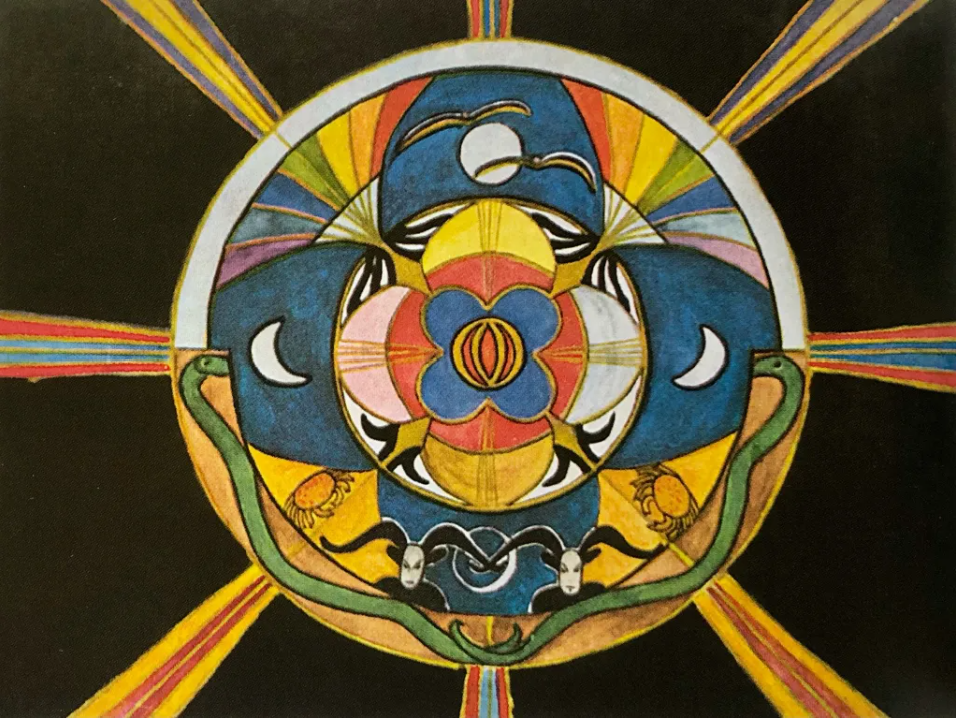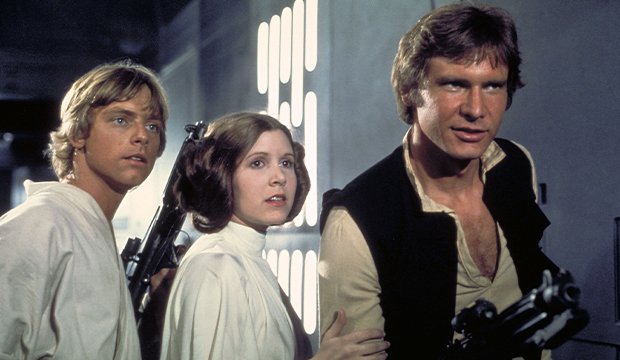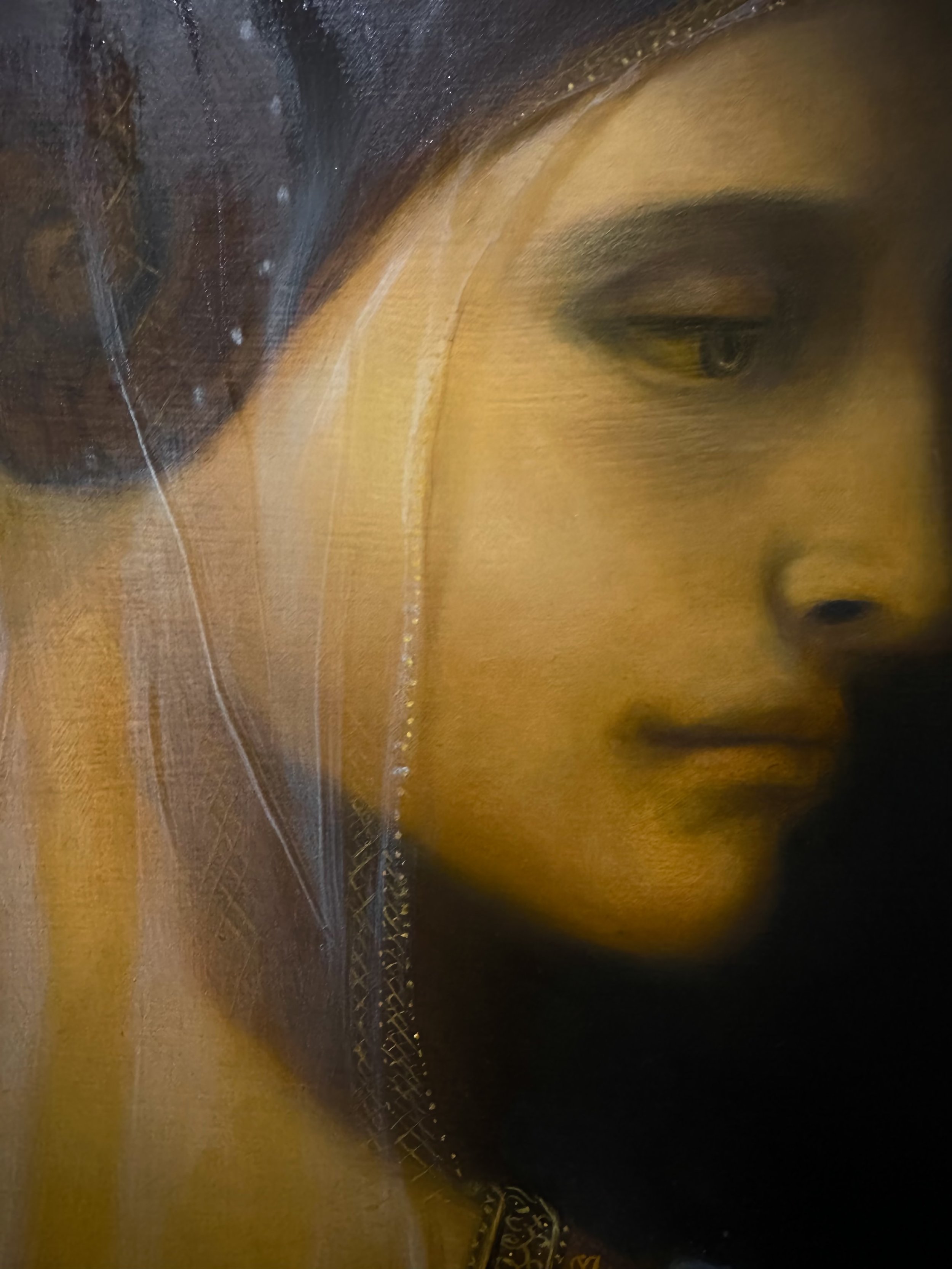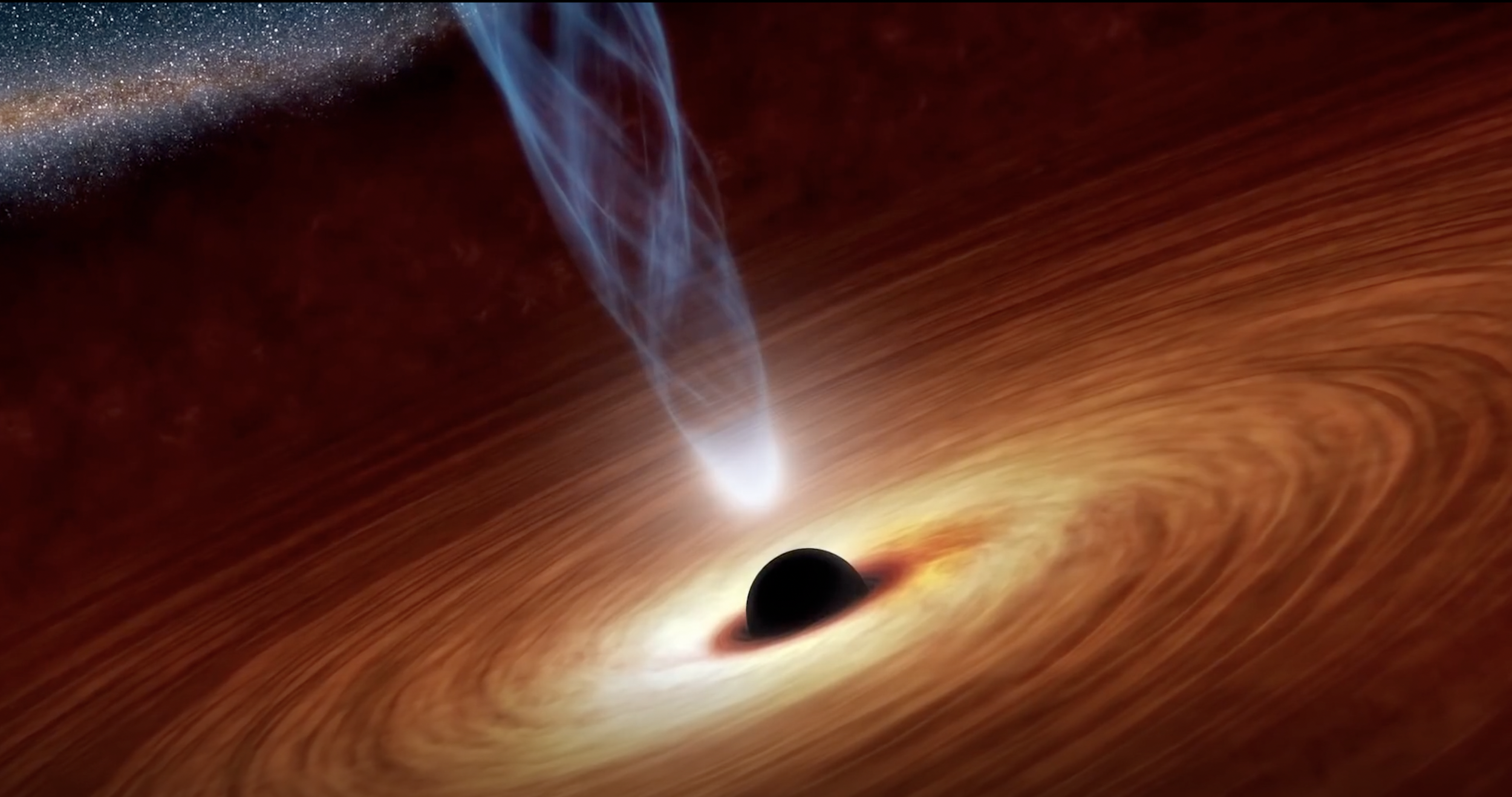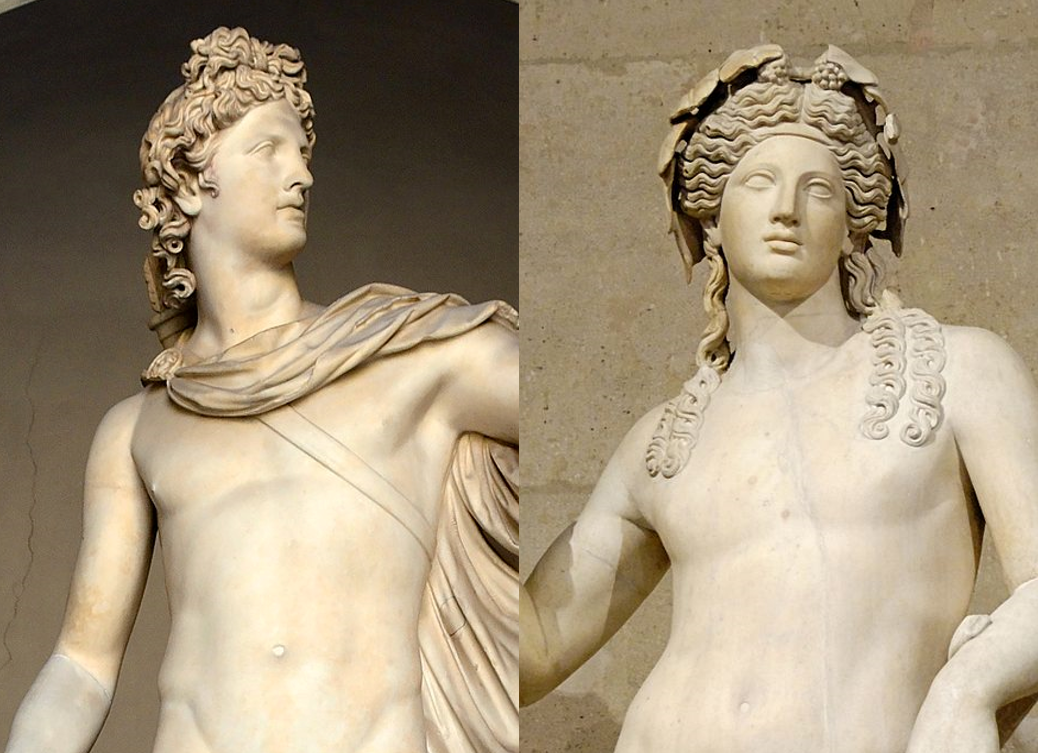The Collective Unconscious
Mandala drawing by C. G. Jung
Angus, you’ve written a few posts recently on these bizarre “Jungian archetypal characters”. Do these have any meaning, or are they just part of some hocus-pocus wizardry?
Excellent question. This is a challenging and deep subject and one of those in which often only the intrinsic vocabulary is used to describe it. Transferring it into plain English therefore presents a challenge. It currently also exists as a concept that means something slightly different to each and every individual. A good place to start, however, is with the “collective unconscious”, which will be the topic of this article. Once we have established what the collective unconscious is, it will become easier to detail the role the deeply metaphorical archetypes play within it. At the end of this post, I may even attempt to break the Star Wars trilogy down into an archetypal narrative - so do read on!
What is the collective unconscious?
The collective unconscious is a term coined by Swiss psychologist Carl Jung to describe a level of the psyche that is deeper and more fundamental than the personal unconscious. According to Jung, the collective unconscious is a reservoir of shared experiences and inherited knowledge that is common to all humans, regardless of their cultural or individual differences. I illustrate this schematically below. The collective unconscious is the deepest layer of the psyche, it sits deeper than the personal unconscious. Our unconscious, of course, sits below our active, conscious level and it is this outer layer that is principally involved in mediating our experiences with the outside world, or to use Husserl’s nomenclature, the Lebenswelt. Our every day interactions with the outside world are represented here as blue arrows. Some experiences of course find their way into our personal unconscious, it is these experiences & memories that make us individually who we are - this is represented with black arrows. Events and experiences over time can roam around our psyche, they mature and carefully shape who we become. Although there are walls between each layer, these walls can be passed. There are indeed doors between these layers and entities will come and go between them. This idea is represented by the black and white cyclic arrows in the diagram.
Schematic illustration of the layers of the psyche including the collective unconscious
Some experiences, I argue, resonate so deeply with so many people that a plausible explanation is that they penetrate the human psyche so deeply, that they interact with the well of the collective unconscious itself, rousing and animating the primordial parts of the psyche that dwell within. These events are represented by the red arrows. No matter who you are, whether you come from East or West, are 10 or 100, rich or poor - the most masterful forms of art will touch you. If you doubt this fact, I strongly suggest watching this short (10 minute) clip. In it, journalists from French television network TF1 show videos of various events from the “West” to Aboriginal people of the Amazon. With no prior exposure to western media, thoughts, music, or myth - there is no precedent upon which their reaction about six minutes in can be explained. The journalists show a recording of Maria Callas singing Casta Diva from Bellini’s opera, Norma. Silence and stillness deafen the room and all attention is on the sound coming from the laptop as the audience is captivated by Callas’ singing.
“This music is not our culture. We do not know what it means. But it is touching.
I find it overwhelming. Without understanding her, we can sense something sacred.”
It is often argued that music from the western tradition can only be enjoyed by those that have grown up under this tradition. This video evidences the exact contrary and suggests that some things are truly universal. To answer the question as to why certain artforms generate such a universal response, I return to the hypothesis that these rare examples manage to permeate so deeply into the human psyche and resonate with our collective unconscious.
“My thesis then is as follows: in addition to our immediate consciousness, which is of a thoroughly personal nature and which we believe to be the only empirical psyche (even if we tack on the personal unconscious as an appendix), there exists a second psychic system of a collective, universal, and impersonal nature which is identical in all individuals. The collective unconscious does not develop individually but is inherited. It consists of pre-existent forms, the archetypes, which can only become conscious secondarily and give definite form to certain psychic contents.”
The collective unconscious is distinct from the personal unconscious, which is the level of the psyche that contains an individual's repressed or forgotten memories, as well as their personal experiences, memories, beliefs, and values. The personal unconscious is perhaps what most people refer to when talking about the subconscious, sometimes unaware of the possibility that there may exist an even deeper layer beneath. While the personal unconscious is unique to each individual, the collective unconscious, according to Jung, is shared by all humans.
Jung believed that the collective unconscious is a source of creativity and inspiration, and that it can be accessed through dreams, myths, and other forms of symbolic (c.f. artistic) expression. By exploring the archetypes and symbols that emerge from the collective unconscious, individuals can gain insight into their own psyche and ultimately their place in the world.
What do the archetypes have to do with it?
Jung believed that the collective unconscious contains archetypes, which are universal patterns of behaviour, thought, and emotion that are present in all cultures and societies. Rather than single objects, they are often manifest as animate characters. These archetypes are inherited from our ancestors and live within our collective unconscious. Jung believed that archetypes were the fundamental building blocks of the psyche, and that they significantly influence our thoughts, feelings, and behaviours. They are not fleeting thoughts or moments, but rather the permanent beings which, by their superposition, can describe the psyche of a composite person. Archetypes are the products of the collective experiences of humanity, and they are encoded in the collective unconscious in the forms of primordial images, thoughts, and symbols.
Jung believed that archetypes play a crucial role in shaping our perceptions of the world around us. He argued that archetypes are heightened in response to certain situations or stimuli, and that they give rise to universal patterns of behaviour that are observed across cultures and historical periods.
Some examples of archetypes include the mother, the father, the hero, the trickster, and the wise old man. (These are the Olympians, if you will). These archetypes are thought to be fundamental to human experience, and they represent core aspects of our psyche and our relationships with others. Secondary and tertiary ones, such as the alchemist and mystic are also important, particularly, in my belief, when discussing artistic creativity.
Jung believed that the exploration of archetypes was an important part of the process of individuation, or the journey toward wholeness and self-awareness. By becoming aware of the archetypes that are active in our psyche, we can gain insight into our motivations, fears, and desires, and one can learn to integrate different aspects of their personality.
Archetypes offer a means of accessing the deep wisdom and creativity that is inherent in the collective unconscious. Their symbolism, I postulate, is particularly important in artistic communication. Why do some pictures so universally appeal to the general mind? The Mona Lisa being another good example. I propose that images such as these outwardly communicate something that stimulates a response from the deepest levels of our psyche - the collective unconscious. They touch the minds of people irrespective of background or culture. Perhaps there are some overlaps here with the theory of aesthetics, but that I’m afraid gets very complicated very quickly, so I shall leave that for a separate article in the future.
Some example archetypes
Below are some of the most important archetypes that make up the collective unconscious.
The mother
The father
The hero
The trickster
The sage/wise old man
The fool
The explorer
The creator
The destroyer
The ruler (King/Queen)
This list is neither exhaustive nor set in stone. Jung's approach to archetypes was flexible and open-ended, and he encouraged his followers to explore and discover new archetypes through their own personal experiences and introspection. In his book "The Archetypes and the Collective Unconscious," Jung identified several archetypes that he considered to be universal and fundamental. These include some of those listed above. However, he also acknowledged that there were many other archetypes that could manifest in different ways depending on individual and cultural factors. I have already talked about The Mystic and The Alchemist and their relation to art in previous articles.
It is likely no coincidence that the list above looks like the set of characters from a fairy tale. Fairy tales, the didactic stories passed from parent to child, generation after generation are loaded with symbolic metaphor. It could be argued that the fairy tale canon tells the stories that are fundamental to human existence. Metaphorically, the story of the evil king or the hero occur daily in peoples lives. They can also usually describe the entirety of a human life, at a high level. Joseph Campbell explores these ideas in his 1949 book The Hero with a Thousand Faces. It is likely that these stories, in their many guises, contribute to the growth and development of the collective subconscious. Next time you read a novel, or watch a film, you will find that the great examples all clearly include archetypal characters and behaviour. You may also find that they follow a fairy tale like narrative if stripped of their superficial details. For what is a great story, if not a myth?
“The collective unconscious - so far as we can say anything about it at all - appears to consist of mythological motifs or primordial images, for which reason the myths of all nations are its real exponents. In fact, the whole of mythology could be taken as a sort of projection of the collective unconscious... We can therefore study the collective unconscious in two ways, either in mythology or in the analysis of the individual.”
Jungian archetypes in Star Wars
The Hero, The Rebel, and The Trickster - archetypes in one of the world’s most popular stories
It may be useful to give a short example here of what I mean. Let’s take the original Star Wars trilogy. A contemporary story that has risen almost to the level of myth since it hit the screens in the 1970s. The main characters each represent a Jungian archetype, as I will attempt to illustrate below. The overarching story of good overcoming evil and the struggle of the hero overcoming all odds is about as primitive and distinctly human as it gets. Let’s explore the characters:
Luke Skywalker - The Hero:
Luke Skywalker is an archetypal hero figure. He embarks on a journey of self-discovery and transformation. He initially starts as an ordinary farm boy, naïve and a little foolish on a desert planet. The story is that of his becoming a Jedi Knight and overcoming of the evil force of the Sith, bringing balance to the Force. Along the way he encounters other archetypes, which play their essential respective roles in the narrative.
Princess Leia - The Rebel:
Princess Leia is a strong, independent, and resilient character who defies authority and fights for her cause. She can be seen as an archetypal rebel or figure of empowerment, representing the selfless fight against oppression and injustice. At the beginning of A New Hope she also represents the distressed. She herself needs saving from captivity following her capture and leaves a message of distress in R2D2. Metaphorically, here she represents the distress of the rebel cause as a whole, and not only her personal one.
Han Solo - The Trickster:
Han Solo is a roguish and charming character who operates outside the established rules and norms. He embodies the archetype of the outlaw or trickster, bringing an element of unpredictability, cunning, and unconventional wisdom to the story.
Darth Vader - The Shadow:
Darth Vader is a complex character who initially represents the archetype of the shadow or sinister dark entity. He is a fallen Jedi who succumbs to the dark side of the Force and becomes a ruthless Sith Lord, embodying the darker aspects of human nature and the consequences of unchecked power. The fact that he was pulled in two halves, the “light” of Anakin Skywalker separated from the darkness of Darth Vader also represents the good/evil duality that necessarily exists within every psyche.
Obi-Wan Kenobi - The Mentor:
Obi-Wan Kenobi is a wise and experienced Jedi who serves as a mentor figure to Luke Skywalker. He embodies the archetype of the mentor or wise old man, providing guidance, wisdom, and spiritual teachings to the hero on his journey.
Yoda - The Sage:
Yoda is an ancient and wise Jedi Master who embodies the archetype of the sage or mystic. He is deeply connected to the Force and serves as a spiritual guide, providing profound insights and teachings to the hero.
Emperor Palpatine - The Tyrannical King:
Emperor Palpatine is the archetypal malevolent King who imposes his corruption on the state through his tyrannical control. He is the Sith Lord who manipulates events behind the scenes, seeking to gain ultimate power and control over the galaxy.
Chewbacca - The Loyal Companion:
Chewbacca, the Wookiee co-pilot of the Millennium Falcon, represents the archetype of the loyal companion. He is fiercely loyal to his friends and serves as a trusted ally to Han Solo, providing support, strength, and camaraderie no matter the scenario.
What makes Star Wars one of the best selling and most talked about contemporary narratives?
I would argue that there are at least two levels that have made the Star Wars story so compellingly popular. The first level is that of the characters. As illustrated above, the main characters each embody the characteristics of archetypes. When watching the story unfold, they awaken notions from deep inside the collective unconscious. That is, the characters resonate with little pieces inside everybody, regardless of their individual nature or story.
The second level is that of the story overall. Side narratives aside, the Star Wars trilogy can be summarised as that of the archetypal hero. The Jedi, Luke Skywalker, begins as a naïve almost fool-like young boy growing up on a planet of little significance. Despite his lack of wealth or resource, his “calling” is to defeat the overwhelming dark influence in the galaxy, manifest by the Sith and bring balance back to the force. Along the way, he seeks the guidance of mentors and sages, he forms relations with companions - some genuine, some not - he learns. He sees the all consuming darkness of the Sith, both externally in the galaxy and the potential for it within himself. In fact, at one point the Sage/Mystic in Yoda conjures in young Skywalker a direct encounter with the “Shadow” of Darth Vader. The story is concluded with the Hero, and companions, conquering the tyranny of the malevolent king (Emperor Palpatine) and the galaxy is returned to balance. Balance is not only achieved in the galaxy, but in the hero themselves. The initially wayward Skywalker, surpasses individual trials and hardship to reach his own individuation.
Yes, in summary, Star Wars is no different to a fairy tale. Except perhaps for the space ships and lightsabers…
This example shows how the communication between archetypes and the collective unconscious works in two directions - like a conversation. They exist externally in stories and narratives all around us. They also exist deep within our own psyches. It is the meeting of the two that results in its universal acknowledgement.
One may ask why the Uffizi gallery of Florence is packed from the floors to the ceiling with images of the Madonna and child. The same question could equally be phrased, why is the image of the Madonna with child so central to the Catholic faith? Why does that image in particular mean so much to so many millions of people. Even, why does it still move people that are not even of the Catholic faith? I would argue that it is because the subject of the Madonna and child is a representation of the archetypal relation between a mother and child and therefore one of universal maternal love. (c.f. “The Mother” archetype). Of course, there is other symbolism encoded in these images - such as the passion of Christ. However, I would argue that the penetration of this symbol into the individual psyche requires knowledge of the Christian faith and cannot therefore be truly universal. The symbol of the passion however, that of sacrifice and suffering is universal - whether described in the context of the Christian faith or not. This is why Michelangelo’s Pietà can equally bring tears to the eyes of a Muslim, or an atheist as it can a Christian.
I am not trying to suggest that every single image of an event that can be considered as “universal” is therefore art. It is the role of the artist to present these archetypal events in a pictorial balance that is capable to washing through the outer layers of the observer. Very few people have this talent. Michelangelo, Bellini, and George Lucas can all be considered geniuses in this respect. What I am saying however, is that for a piece of art to be universally moving, to have the ability to resonate with a person irrespective of their individual character or background, it must communicate with the archetypal entities right at the depths of the human collective unconscious.
Summary
I bet you never thought you’d find the Mona Lisa, Maria Callas, and Chewbacca in the same article - but there we go! Jungian archetypes are all around us, out there in the real world in stories, myth, and symbols. But more importantly they exist, metaphorically, within all of us. Deep within the collective unconscious. I put it to you that the reason why certain masterpieces affect anybody, regardless of background, is due to their ability to cut right to the core of the human psyche. Touching, exciting, and animating truths that are fundamental to all of us.
Do let me know your thoughts or questions in the comments section below!
Until next time.
Angus
You may also like:
References
[1] The Collected Works of C. G. Jung, vol. 9, part 1, p. 43
[2] The Collected Works of C. G. Jung, vol. 8 “The Structure of the Psyche”
